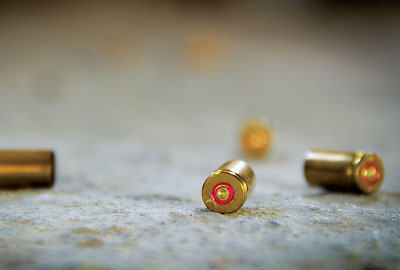Mental Illness Too Often Wrongly Associated With Gun Violence
Abstract
People with mental illness are more likely to be the victims of violence than perpetrators, but mass shootings are often incorrectly associated with psychiatric illnesses. Psychiatrists can help educate the public about evidence-based strategies that reduce gun violence.

Only 4% of the violence that occurs in the United States can be attributed to people with mental illness, yet when incidents of gun violence occur, they are almost immediately associated with psychiatric illnesses.
Words such as “psycho,” “crazy,” and “insane” are often used in media coverage of events such as mass shootings, explained Dhruv Gupta, M.D., a PGY-3 psychiatry resident at the Icahn School of Medicine at Mount Sinai Hospital. That media coverage perpetuates a stigma that people with mental illness are inherently dangerous was addressed by Gupta and his colleagues during the session “Why Blaming Violence on Mental Illness Is Misleading: A Call for Multifaceted and Evidence-Based Strategies to Reduce Gun Violence” at APA’s online 2021 Annual Meeting in May.

Psychiatrists are often asked to predict who may become perpetrators of violence, but often family members are in a better position to report when an individual may do something violent, says Alisa Gutman, M.D.
The presenters pointed out that people with mental illness are far more likely to be the victims of violence than the perpetrators. Research shows that of all the violence that occurs in the United States, 96% is due to risk factors other than mental illness, said Alisa Gutman, M.D., Ph.D., the founder and medical director of the Philadelphia Human Rights Clinic. Referring to mental illness during every conversation about violence “further stigmatizes what is already a marginalized group of individuals who are suffering with severe symptoms,” Gutman said. “That’s unacceptable, and as psychiatrists, we need to take a public stand.”
In some circumstances, psychiatric patients may have a high risk of violence perpetration compared with the general population, including when in emergency departments or involuntarily committed. First-episode psychosis patients also have a higher risk of violence. Yet the risk of violence may be correlated with other systemic concerns, such as poverty, crime victimization, involvement with illegal drugs, and early life trauma, which people with serious mental illness also commonly experience, Gutman explained.
“We must ask ourselves: When we’re looking at the perpetration of violence in individuals with serious mental illness, what’s the actual factor here that’s resulting in violent actions?” Gutman said. In most cases, the data support that, outside of high-risk periods, the violence perpetration risk is not higher than that of individuals in the general population, she said.

“While restricting firearm access on the basis of certain dangerous behaviors is supported by evidence, restricting access on the basis of a mental illness diagnosis is not,” says Jessica Bayner, M.D.
There are a number of risk factors for gun violence, including being young, male, and disadvantaged and misusing drugs or alcohol, explained Jessica Bayner, M.D., a recent graduate of the child and adolescent psychiatry track of the Forensic Psychiatry Fellowship at the University of Pennsylvania. She is a consultant and forensic psychiatrist in Auckland, New Zealand. “Evidence points to the fact that violence risk is better characterized by behaviors than diagnoses,” Bayner said.
She pointed to examples of this theory being used effectively to reduce gun violence. A California law passed in 1991 that prohibits firearm ownership among people charged with a violent misdemeanor resulted in a 29% reduction in arrests for new crimes involving guns and other violence. Similarly, cities and states with laws prohibiting people who are subject to domestic violence restraining orders from having guns had 25% fewer intimate-partner homicides.
The most prevalent question that audience members asked after the presentation was “Can psychiatrists effectively predict who may commit acts of violence?” “It’s not for us to predict all the violence that will occur,” Gutman said. “Ultimately, the people who spend time with an individual every day, such as family members, are in a better position to notice high-risk times when an individual may become violent.”
Yet, Bayner pointed out, as of April 2020, only 19 states and Washington, D.C., had some type of red-flag law, which allows family members to petition a court to temporarily remove firearms from people deemed a danger to themselves or others.
Gun violence is a hugely complex issue and requires a variety of stakeholders to address, said Ahmar Mannan Butt, M.D., an adult and child psychiatrist at Broadlawns Medical Center in Des Moines, Iowa. “One discipline cannot address this multifaceted issue,” Butt said. “We need help from all disciplines, and education is the first step.” ■



